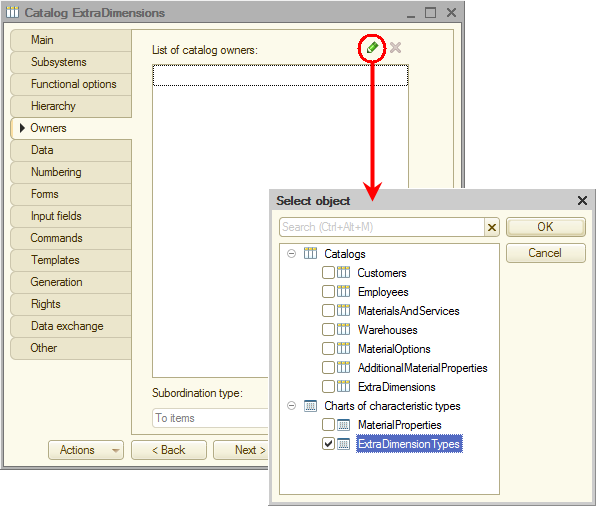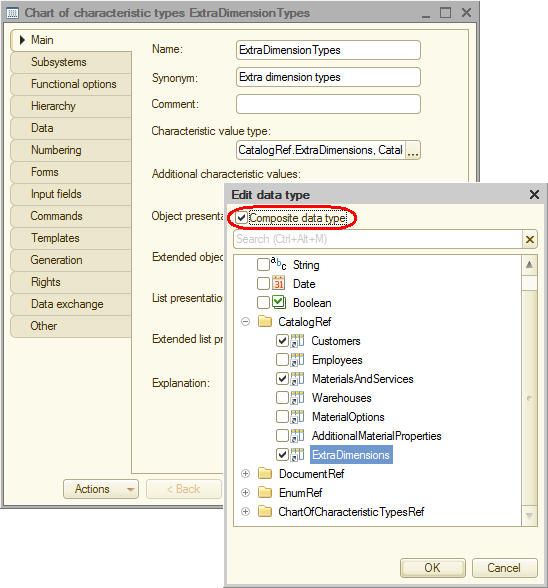Let us create a chart of characteristic types that will store the descriptions of analytical accounting sections (extra dimension types).
- In Designer, create a ChartOfCharacteristicTypes object named ExtraDimensionTypes.
- On the Subsystems tab, include the chart of characteristic types in the Accounting subsystem.
You also need a catalog for storing user-defined analytical accounting objects. - Create a Catalog object named ExtraDimensions.
Let us specify that the catalog is subordinate to the ExtraDimensionTypes chart of characteristic types. - On the Owners tab, click the Edit List Item
 button and select the ExtraDimensionTypes chart of characteristic types (fig. 16.1).
button and select the ExtraDimensionTypes chart of characteristic types (fig. 16.1).

Fig. 16.1. ExtraDimensions catalog editor - Close the catalog editor and return to the chart of characteristic types.
- On the Main tab, in the Characteristic value type field, click the Select
 button and specify the composite data type as follows (fig. 16.2):
button and specify the composite data type as follows (fig. 16.2):
- CatalogRef.Customers
- CatalogRef.MaterialsAndServices
- CatalogRef.ExtraDimensions

Fig. 16.2. Specifying a value type for a chart of characteristic types
The accounting department at Jack of All Trades maintains records of monetary transactions with material and customer dimensions, but in the future they might need more dimensions (this is why we use the ExtraDimensions catalog).
Note that the catalog that stores additional characteristic values must be present in the composite type that defines the characteristic value type, otherwise Designer displays an error message. - Specify that additional characteristic values are stored in the ExtraDimensions catalog.
- On the Other tab, click Predefined data and enter the predefined values for the chart of characteristic types (fig. 16.3).
They represent available analytical accounting types.

Fig. 16.3. Predefined characteristic types - Click Add
 to create the following predefined extra dimension types:
to create the following predefined extra dimension types:
- Materials. Code: 000000001, type: CatalogRef.MaterialsAndServices
- Customer. Code: 000000002, type: CatalogRef.Customers

